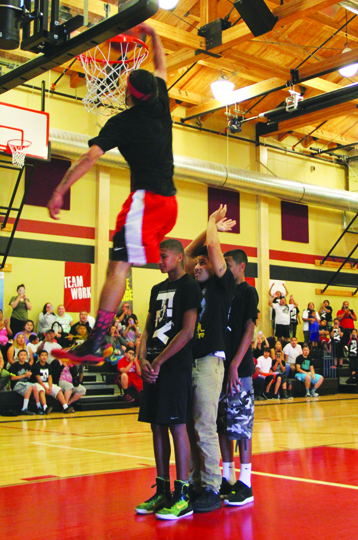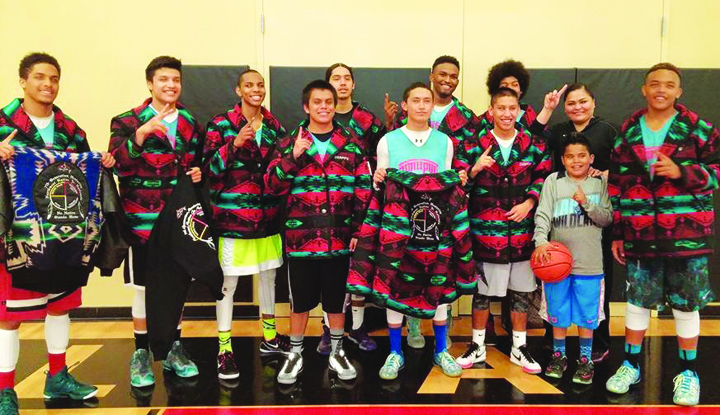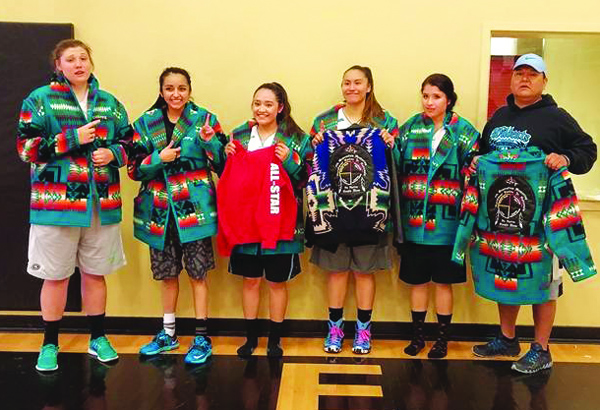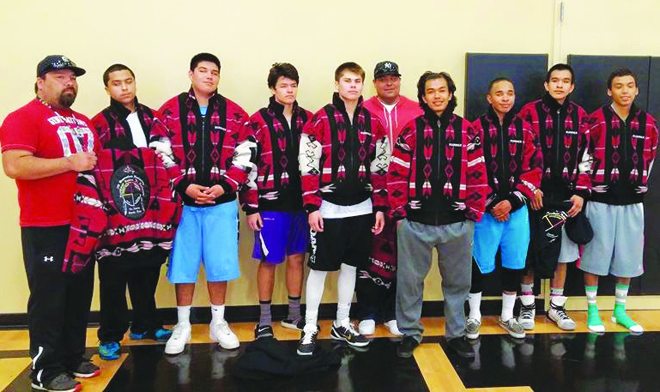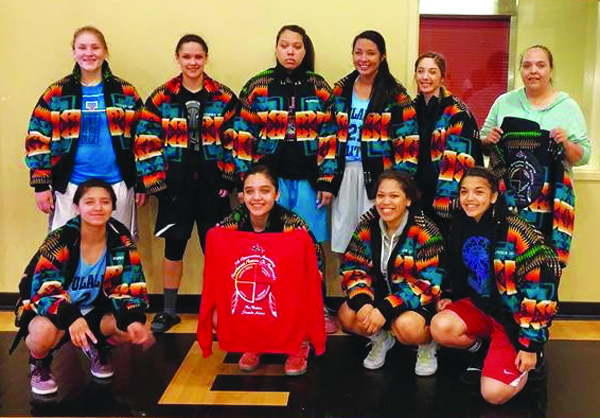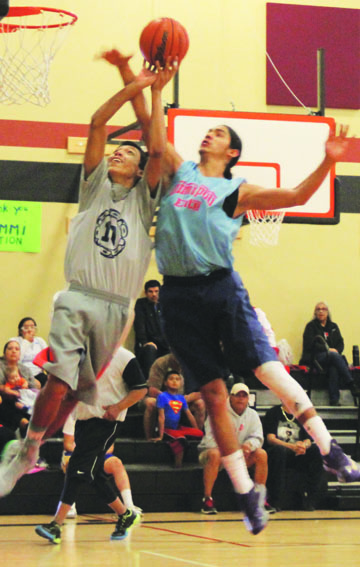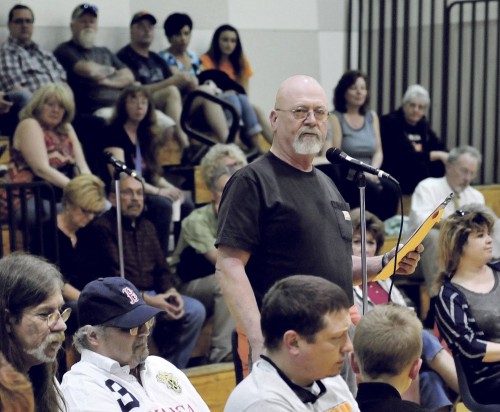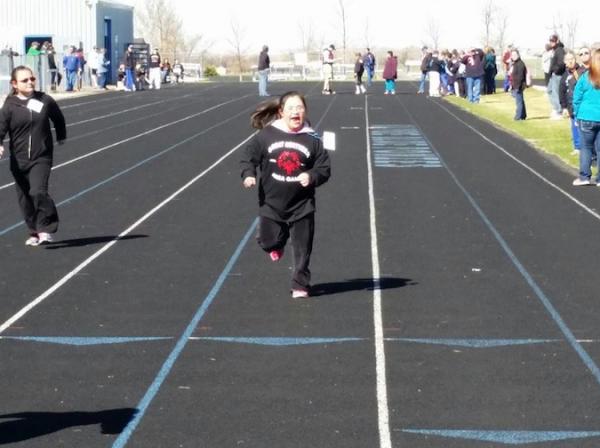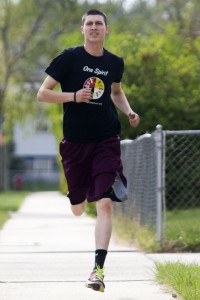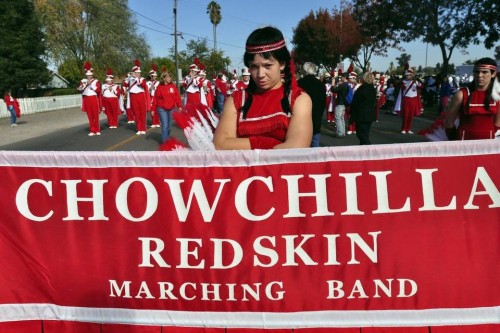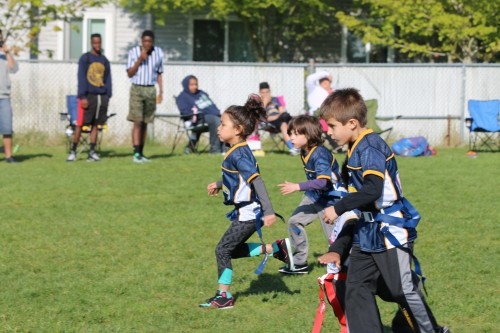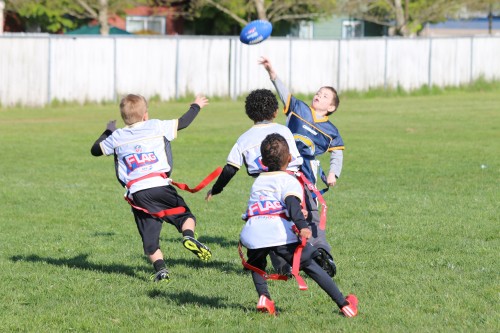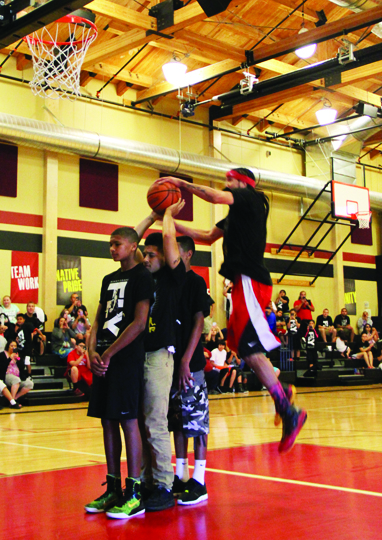
Photos/Micheal Rios
by Micheal Rios, Tulalip News
On Thursday, May 28, the Higher Education Department held a special event for Tulalip’s youth at the Greg Williams Gym. They made it possible for the youth to come together for an evening consisting of every youth’s choice of dinner, pizza and Gatorade, while experiencing the unique talents of super dunker and motivational speaker, Kenny Dobbs. Every youth who attended the event also received their choice of a Kenny Dobbs ‘Fly’ or ‘Dream Catcher’ t-shirt.
Dobbs is a member of the Choctaw Nation of Oklahoma, Phoenix resident and professional basketball player, but is most notably recognized as the self-proclaimed ‘King of the Dunk Game’. He has toured the NBA while being sponsored by Sprite as a celebrity dunker, performing in front of sold-out stadiums during halftime shows, celebrity games and NBA All-Star Weekends. Becoming a Sprite Slam Dunk Champion and International Slam Dunk Champion means Dobbs’ dunking talents have become globally recognized. As his reputation has soared sky high, like his vertical leaping ability, Dobbs never forgot where he came from and who he is representing. He now tours across the nation, going reservation to reservation as a motivational speaker for tribal youth to share his story of hope and to perform his dunking abilities while doing so.
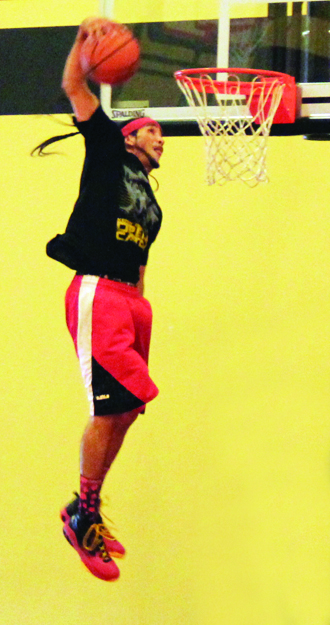
Photo/Micheal Rios
“I’m so excited to be here and you guys are so lucky to be able to grow up in such a beautiful community,” Dobbs said to the estimated 150 Tulalip youth in attendance. “Today, the main theme is for me to be able to come out and have a good time with you guys. It’s going to get personal as I share who I am and what I’ve come from. By sharing my story I want all of you to know that I’m somebody that you relate to and can learn from. Today, I stand before you all as an International Slam Dunk Champion, but before any of that became reality there was a lot of challenges and difficulties I was facing in my life. Similar to a lot of you I’m sure.”
As an adolescent, Dobbs grew up in a drug and gang related neighborhood in Phoenix and found himself going down the wrong road. After a series of personal conflicts with his parents, run-ins with the law, dropping out of high school, and a lengthy stay in a jail cell, Dobbs realized his life had become a nightmare and the only way out was to make wholesale changes to his lifestyle. After being set free from his self-made incarceration, Dobbs began to set himself free from everything else that had been holding him back in life. He started with his friends; anyone who had drug or gang affiliations he cut ties with, anyone who brought more negative energy than positive energy was also cut loose.
As mentioned earlier, Dobbs dropped out of high school. He was 15 years-old at the time and got into a physical fist fight with his dad and was kicked out of his house. Soon after followed his stint in jail. At 17 years-old he found himself with no real high school education, no place to call his home, and no future prospect other than what he believed he could do. To hold himself accountable and to ensure he was staying on the right road for future success, Dobbs created what he calls his ‘Dream Journal’.
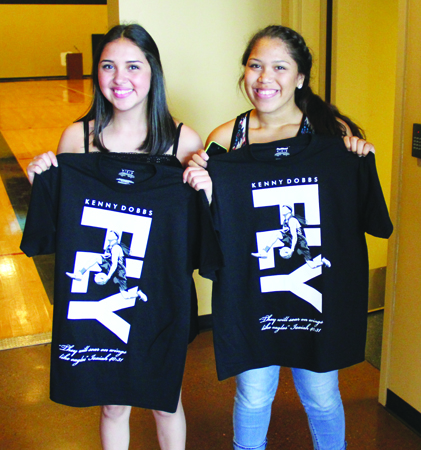
Photo/Micheal Rios
“I began writing down all my goals and dreams on paper. In that notebook I began to explain how I wanted to become a professional athlete and positive role model for my family, my home, and my community,” explained Dobbs. “I wrote down all my goals, big or small, and from that point on I continued to learn from that process. It was taking the goals and the dreams from my mind and my heart and actually putting them down on paper. They became something that I not only thought about, but that I saw as well. I began to write the steps it was going to take for me to accomplish those goals and dreams, so as I took them out of my mind and onto paper now I could read them and see them. They became reality to me and to this day I still keep myself a dream journal and all that went into there was, what are my goals, what are my dreams, and then I’d break it down step by step so I knew what I’d have to do to accomplish my goals and reach my dreams. The very first goal I ever set in my life was getting my high school diploma.”
At the time Dobbs had no clue how much work and dedication it would take him to achieve the goal of receiving his high school diploma, but he was determined and that’s all that mattered. It would take two hard years, no winter breaks, no summer breaks, all day and evening school sessions for Dobbs to accumulate enough credits to reach his goal. He remained focused and grinded every day at his studies until he received his diploma.
“To this day that was the very first goal I set, stuck with, and accomplished in my life. Now when I went to school that day and they handed me my high school diploma that was a sense of accomplishment I never felt before. I committed two years of non-stop grinding, of blood, sweat and tears that I committed to achieving my goal. Now, there is no possibility of me accomplishing that goal and dream and staying focused on it on a daily basis if I would had still been using drugs and alcohol, if I had been still hanging out and going to parties, chasing the girls, and stayed involved with the friends who were getting me into trouble. There would have been no possibility for me to accomplish my goal and dream of getting my high school diploma.”
Realizing what was possible if he remained focused and dedicated to his goals and dreams opened up a whole new world of possibility to Dobbs. Soon after receiving his diploma he attended a junior college where he walked-on as a player for the basketball team. By chance he would receive an invitation for a celebrity Slam Dunk Contest and after wowing the crowd with never before seen dunks, he would be crowned Slam Dunk Champion for the first of many times yet to come. He would go on to travel the world showcasing his talents, from south Florida to South America, from Rome to Romania as a celebrity dunker for both the NBA and Sprite.
After founding his own organization ‘UpRise Youth Movement’ with the mission of empowering youth of all ages with a challenging, yet empowering message of hope, Dobbs now travels across the country to educate youth on Native lands. For three years he served as the chairman on the Arizona State Youth Advisory Council for Alcohol and Substance Abuse Prevention. He also had the privilege of serving as an ambassador for Nike’s N7 division. He knows that if you want to grab a youth’s attention, dunking is a good way to do it.
“I accomplished my goal of being one of the top dunkers in the world,” Dobbs says. “But most important to me is the UpRise Youth Movement. The dunk shows get the youth inspired and open to listening to what I have to say, then I’m able to deliver a powerful message of hope that will encourage them to rise up and become leaders in their home, school and community. I believe this is the reason I’m here, and I thank God I am now living out His purpose for my life. This is what makes my job the best in the world!
“Each one of us has a purpose, a plan and a destiny for our life, but some of us may never reach that potential if you don’t believe in yourself right now. Write your dreams and goals down and what you think are the steps to achieving them. Separate yourself the negative influences that you’re facing and begin to take that step of getting off the bench and getting into the game that is your purpose in life.”
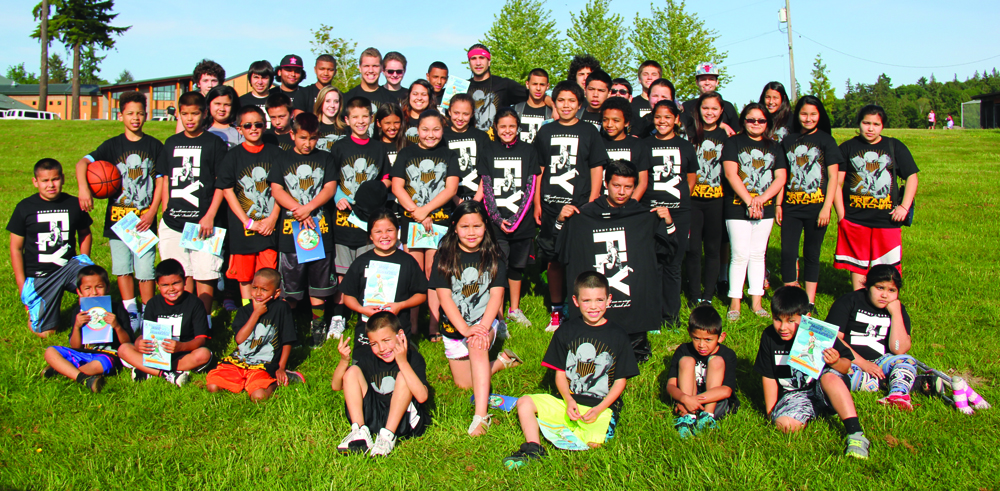
Photo/Micheal Rios
Contact Micheal Rios, mrios@tulaliptribes-nsn.gov


